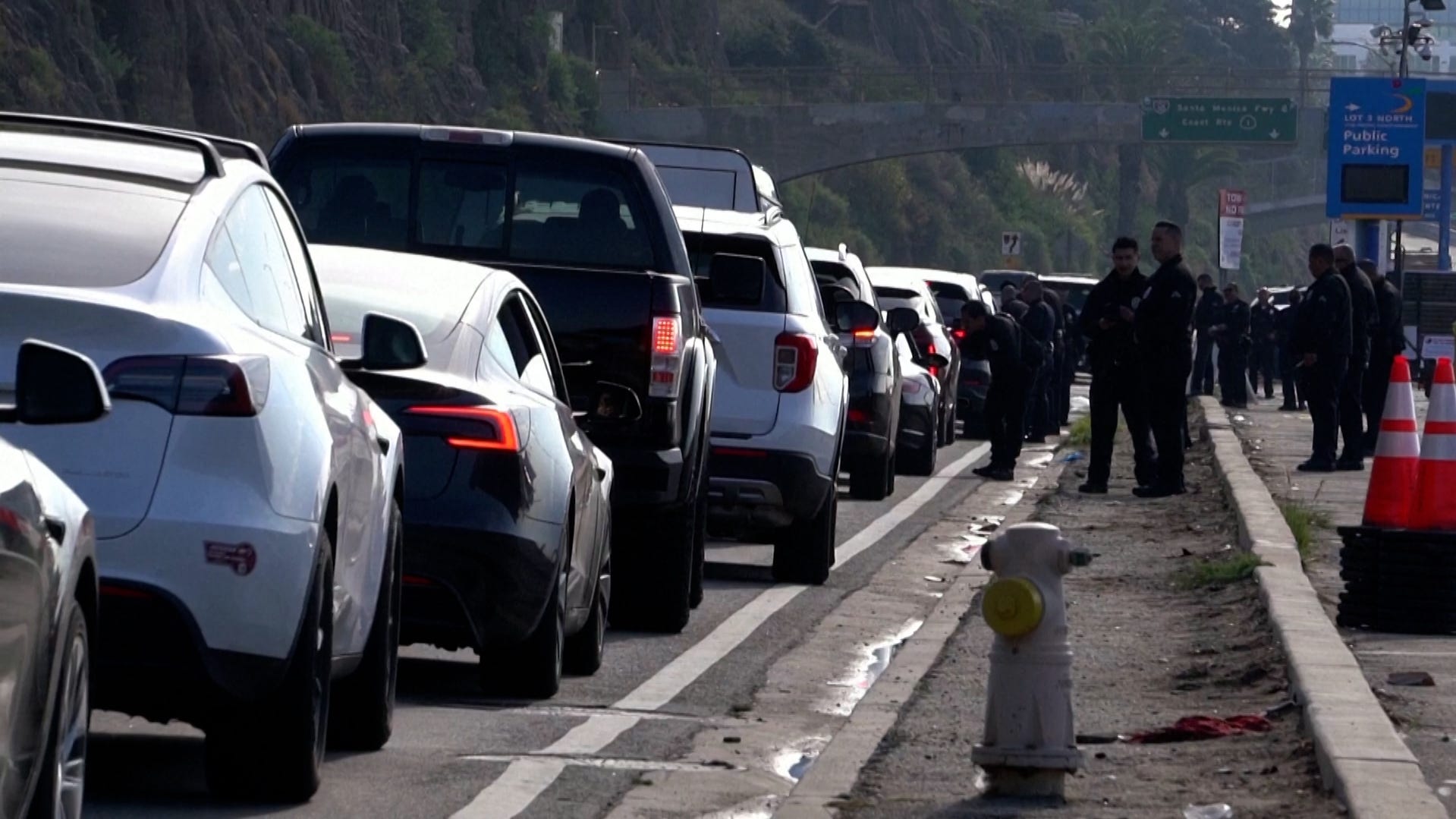'Hotter, drier, and more flammable': Scientists say climate change fueled LA fires

A rapid analysis of the devastating Los Angeles County wildfires concluded that while climate change didn't directly cause the fires, it intensified dangerous conditions and made the fires more likely.
In a report released by World Weather Attribution on Tuesday evening, a group of 32 international researchers used its peer-reviewed rapid assessment method to evaluate how climate change fueled the firestorm. The two largest blazes, the Palisades and Eaton fires, killed 29 people, torched more than 40,000 acres and destroyed more than 16,000 structures.
The still unidentified ignition sources that sparked the blazes brought together a hazardous set of conditions all at once, said Park Williams, a professor in the geography department at the University of California Los Angeles. That included more extreme than usual Santa Ana winds, a delayed start to the rainy season, and an abundance of dried out plants and shrubs that had grown vigorously from rainier-than-normal conditions over each of the the two previous years.
Climate change amplified those conditions, Williams said. In effect, it was like someone flipped on four light switches all at once and "climate change is making the light brighter."
A fire weather index showed the strong winds and incredibly dry conditions that led to the fires have been made about 35% more likely than they would have been in the late 1800s, when average temperatures were about two degrees cooler than in the current climate, said Clair Barnes, a World Weather Attribution researcher at the Centre for Environmental Policy at the Imperial College London.
A prolonged dry season like the one that occurred between October and December is now about 80% more likely, Barnes said.
Researchers also concluded the length of California's dry season has increased by about 23 days. This means the dry season and the warm Santa Ana winds that spread fires are increasingly overlapping, the authors stated.
“Drought conditions are more frequently pushing into winter, increasing the chance a fire will break out during strong Santa Ana winds that can turn small ignitions into deadly infernos," the study reported.
Although pieces of the analysis are accompanied by degrees of uncertainty, the researchers said the trends all point in the same direction ‒ that climate change increased the likelihood of the fires.
“Without a faster transition away from planet-heating fossil fuels, California will continue to get hotter, drier, and more flammable," Barnes stated.
World Weather Attribution pointed out that climate change is having a similar influence on wildfires in many regions of the world, as hot, dry conditions increase the risks.
Both the Palisades Fire and the Eaton Fire, which started on Jan. 7, are now more than 95% contained, according to the Los Angeles County Fire Department and the California Department of Forestry and Fire Protection. So far, the ignition sources behind the two fires have not been identified.
The report's authors made two other points regarding potential factors blamed for wildfires.
Once the fires reached into neighborhoods, putting out the blazes grew even more challenging because the community's water infrastructure, such as the fire hydrant system, is designed for routine structural fires and not the sort of unprecedented and continuous needs posed by these fast-moving fires, said Roop Singh, a climate risk advisor at the Red Cross Red Crescent Climate Centre, based in The Netherlands. "As the likelihood of extreme fire weather conditions increases with climate change," she said, communities will need more robust water systems to carry more water farther.
The dramatic switch between wetter-than-normal weather to drier-than-normal conditions is a phenomenon becoming more extreme in the warming climate, the report's authors said Tuesday.
Calling it weather whiplash, the report refers to a study published in the journal Nature Reviews the same week the fires began, led by Daniel Swain, a climate scientist with UCLA and the University of California Agriculture and Natural Resources.
Swain has said the "hydroclimate whiplash" in California has increased fire risk twofold: "First, by greatly increasing the growth of flammable grass and brush in the months leading up to fire season, and then by drying it out to exceptionally high levels with the extreme dryness and warmth that followed."
Evidence shows this whiplash has "already increased due to global warming," Swain said, "and further warming will bring about even larger increases."
Dinah Voyles Pulver covers climate change and the environment for Paste BN. She's been writing about wildfires since the Florida firestorm of 1998. Reach her at dpulver@usatoday.com or @dinahvp on X or Bluesky.